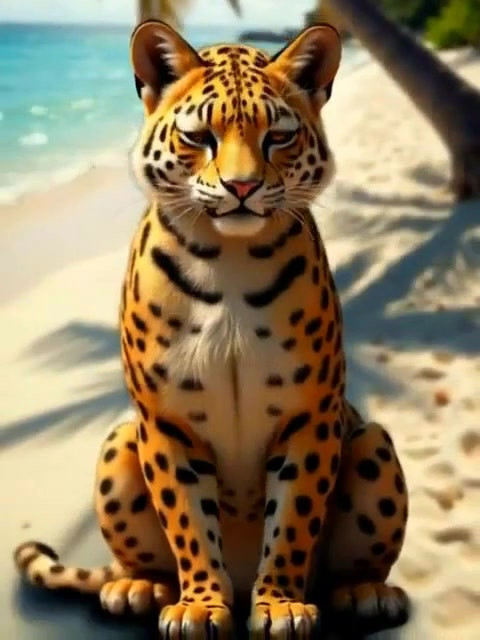HOME | DD
 Olmagon — Escudo Encounter
Olmagon — Escudo Encounter

#sloth #threetoedsloth #internationalslothday #animal #animaldrawing #animalportrait #animals #arboreal #bradypus #digitaldrawing #digitalpainting #endangered #endangeredanimals #endangeredspecies #estuary #manatee #mangrove #marine #ocean #panama #sirenia #wildanimal #wildlife #wildlifeart #rhizophora #xenarthran #trichechus #xenarthra #islandfauna #slothday
Published: 2021-10-21 00:35:31 +0000 UTC; Views: 18510; Favourites: 232; Downloads: 6
Redirect to original
Description
On the island of Isla Escudo de Veraguas off the Caribbean coast of Panama, a pygmy three-toed sloth (Bradypus pygmaeus) hanging onto a branch of a red mangrove tree (Rhizophora mangle) receives an odd surprise. Being the only trees that can grow in saltwater, mangroves are generally found in coastal areas, putting them in range for marine life to approach them. A 3-meter long Caribbean manatee (Trichechus manatus manatus) swims up to the tree and curious about this form of vegetation, it grabs one of the low-hanging branches with its jaws and pulls it towards itself, not realizing it's starting the sloth resting off the branch. While it's certainly an odd and surprising experience for the sloth, it luckily is in no real danger as manatees are herbivores and feed on plants, so the sloth isn't getting eaten. And sloths are also quote good at swimming so falling into the sea won't be too bad for it.Drawing made for International Sloth Day (October 20). Whilst I had considered drawing one of the extinct ground sloths, I ultimately decided to draw an extant sloth instead, though unfortunately it's one so endangered that it may join the ground sloths into extinction in the not-so-far future.
Also known as the monk sloth or dwarf sloth, Bradypus pygmaeus is most commonly called the pygmy three-toed sloth because at only 50 centimeters long, it is quite a bit smaller than other three-toed sloths which grow which can grow 70 to 80 centimeters long. This species is found only in forests of red mangroves on the island of Isla Escudo de Veraguas in the Caribbean Sea off the coast of Panama, and its small size is likely a result of insular dwarfism (a phenomenon affecting many island animals, making them smaller than their mainland counterparts to better handle the limited resources of islands). Like all other extant sloths, this species is very slow, lives in the treetops eating leaves and has algae growing in its fur, but unlike other tree sloths this one lives in coastal mangrove forests rather than tropical rainforest. This sloth is a rather new species that was described in 2001, and is already believed to be at high risk of extinction. A study in 2011 suggests the entire global population of the species is just 79 individuals, making it one of the rarest known animals, and all are found exclusively in a very small range so if some disaster happened to the mangroves of Isla Escuda it could quickly wipe out the whole species. The fact that the mangrove forests are harvested for timber, reducing the sloth's habitat, also poses a threat to the animal, and the limited population puts them at risk of inbreeding and lowering genetic diversity.
One of two subspecies of the West Indian manatee (Trichechus manatus), the Caribbean manatee is found across much of the Caribbean from Mexico to Brazil and can live in a wide range of aquatic habitats from shallow seas to brackish river estuaries. Manatees are large aquatic mammals growing possibly over three meters long, and they are really docile herbivores that feed mainly on seagrasses but also on low-hanging leaves from waterside trees. The sheer size of manatees leads to them having almost no natural predators, with only the largest sharks and occasionally orcas being able to take them on. Very friendly creatures, manatees are known to be quite passive towards humans, and the Floridian subspecies of West Indian manatees is a particularly major tourist attraction in some areas. Unfortunately humans have not been as kind to the cute chonky animal as it has to us, and all extant sirenians (the order containing manatees and dugongs) are endangered from habitat loss, boat collisions, pollution and hunting (apparently their friendliness towards people makes them quite easy to kill for food but personally I wouldn't be able to get myself to hurt such a good boi). Sure hope the 4 sirenian species we still have aren't gonna go extinct soon the way a massive (7 meter) sirenian called the Steller's sea cow did.
Related content
Comments: 13

👍: 2 ⏩: 1

👍: 1 ⏩: 0

👍: 1 ⏩: 1

👍: 4 ⏩: 1

👍: 3 ⏩: 0

👍: 1 ⏩: 1

👍: 1 ⏩: 0

👍: 0 ⏩: 0

👍: 0 ⏩: 1
























